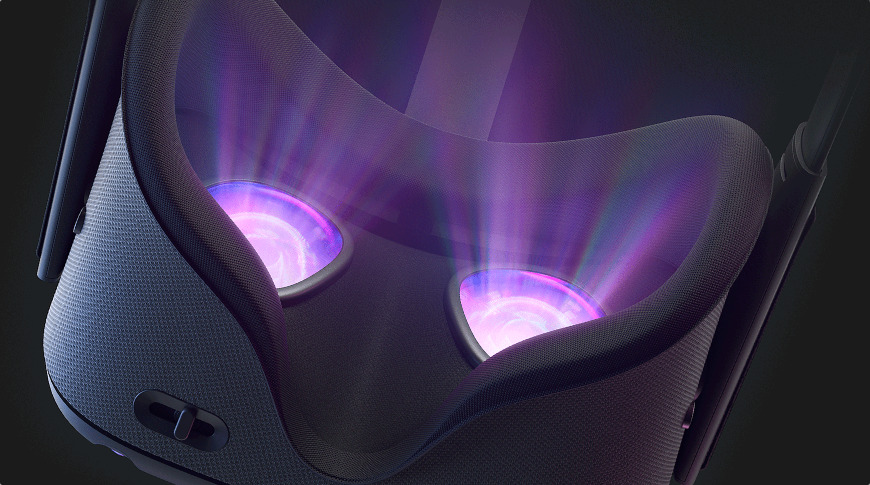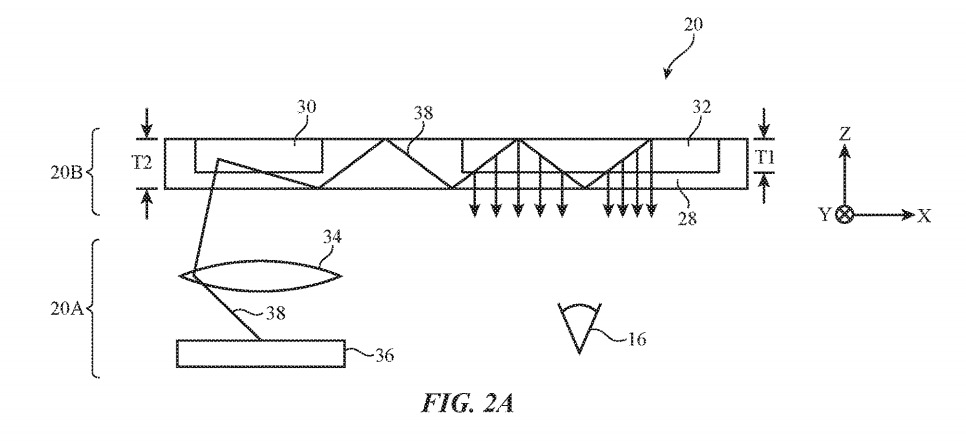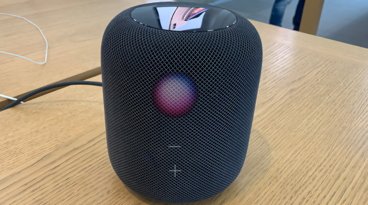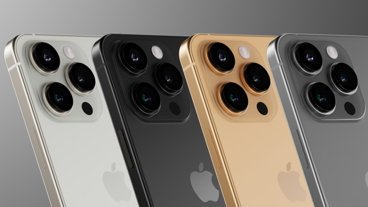Apple is working on holographic imaging to lighten its AR or VR smart glasses
Last updated
Apple is advancing its work on optical waveguides and holographic image delivery, in part to lighten and shrink its future AR or VR headset.
Typical virtual reality headsets rely on a display placed inches away from the user's eyes, as well as a set of lenses. While this results in a headset that is relatively cheap to produce, it also introduces issues.
In a patent application filing published on Thursday, Apple suggests there could be limitations to how these lens-based setups can work. Apple claims that "some of the field of view produced by a near-eye display may not be viewable from a single-eye position."
Apple's concern stems from using lenses or a small display. Alterations to optical components altering the cost of the headset as a whole — and as they grow, cause a cascading cause-and-effect of rising prices and headset size and weight.
Another issue is with the display itself, as its location away from the face forces other components and the enclosure to be positioned further away from the user, which can apply more pressure to the face. If the display could be located closer, and use fewer or lighter components, the headset may be more comfortable to wear.
The application, titled "Optical Systems for Displays," Apple proposes the use of a system of waveguides to transfer light from an optical system to the user's eyes. The waveguide replaces the displays, and is used to project an image into the user's eyes with the redirected light.
To assist the waveguide, input and output couplers could be used, with the input redirecting light from the display unit into the waveguide, while the output pushes light in the direction of the eye. These generated images could be formed from holographic optical elements, including thin holograms, volume holograms, and surface-relief gratings.
Apple's intended mechanism may also help redirect or redistribute light that would "otherwise be outside of the user's field of view towards the user's eyes," with the use of a light-redirecting element positioned between the display unit and the input coupler.
The system could use two waveguides rather than one, namely one for each eye, or two inputs and outputs but using one waveguide with a holographic element used to redirect light to the correct eye. In this instance, the light-redirecting element could also use interference patterns that are non-parallel with interference patterns of the output coupler, something which could help prevent light intended for one eye from being accidentally viewed by the other.
Apple files numerous patent applications weekly. While the existent of a filing indicates areas of interest for the company's research and development efforts, it does not guarantee the company will use the idea in a future product or service.
Rumors have been circulating for some time about Apple producing some form of AR or VR headset, or smart glasses. Many patent filings showing the company is keen to develop the concept.
A system of waveguides and holographic elements has been suggested previously, in one patent application from September titled "Display Device" where a "reflective holographic combiner" is used in an AR headset to combine digital elements with a real-world view. Similar to Thursday's patent, in this interpretation, waveguides would help transport the beams of light into the holographic combiner.
Waveguides are of particular interest to Apple, with engineers and key personnel seen to visit AR waveguide suppliers at CES 2019, with firms in the field at the event including DigiLens, Lumus, Vuzix, and WaveOptics, among others. Apple also purchased AR headset lens producer Akoni Holographics in 2018 as well as AR headset startup Vrvana in 2017.
Rumors about smart glasses dubbed "Apple Glasses" suggest the creation of an AR headset referred to internally as "T288," which runs on its own "rOS" operating system and employs 8K displays. A separate processing unit is rumored to overlay the virtual images over real-world objects present in the user's vision.
The latest patent application identifies its inventors as Graham B. Myhre, Eric J. Hansotte, Guolin Peng, Hyungryul Choi, Se Baek Oh, and Paul Gelsinger-Austin.
Myhre is a senior engineering manager of Display Exploration at Apple, and has related patent applications to his name, including a "Foveated Display" and others pertaining to head-mounted display systems.
Hansotte has the similar job title of senior display exploration engineer, while Peng is a senior optical engineer, Choi is an engineering manager working in optics, Oh is an optics specialist, and Gelsinger is a display exploration engineer.
Many of the named inventors are listed together in other patents and applications, such as an application for "Head up Display" dealing with vehicle displays and an "Active Glare Suppression System," both of which could be used in a potential Apple Car.
 Malcolm Owen
Malcolm Owen















 Amber Neely
Amber Neely
 Thomas Sibilly
Thomas Sibilly
 AppleInsider Staff
AppleInsider Staff
 William Gallagher
William Gallagher

 Christine McKee
Christine McKee









2 Comments
I think we’ll see an Apple Car before these things. They still sound about 10-15 years off.